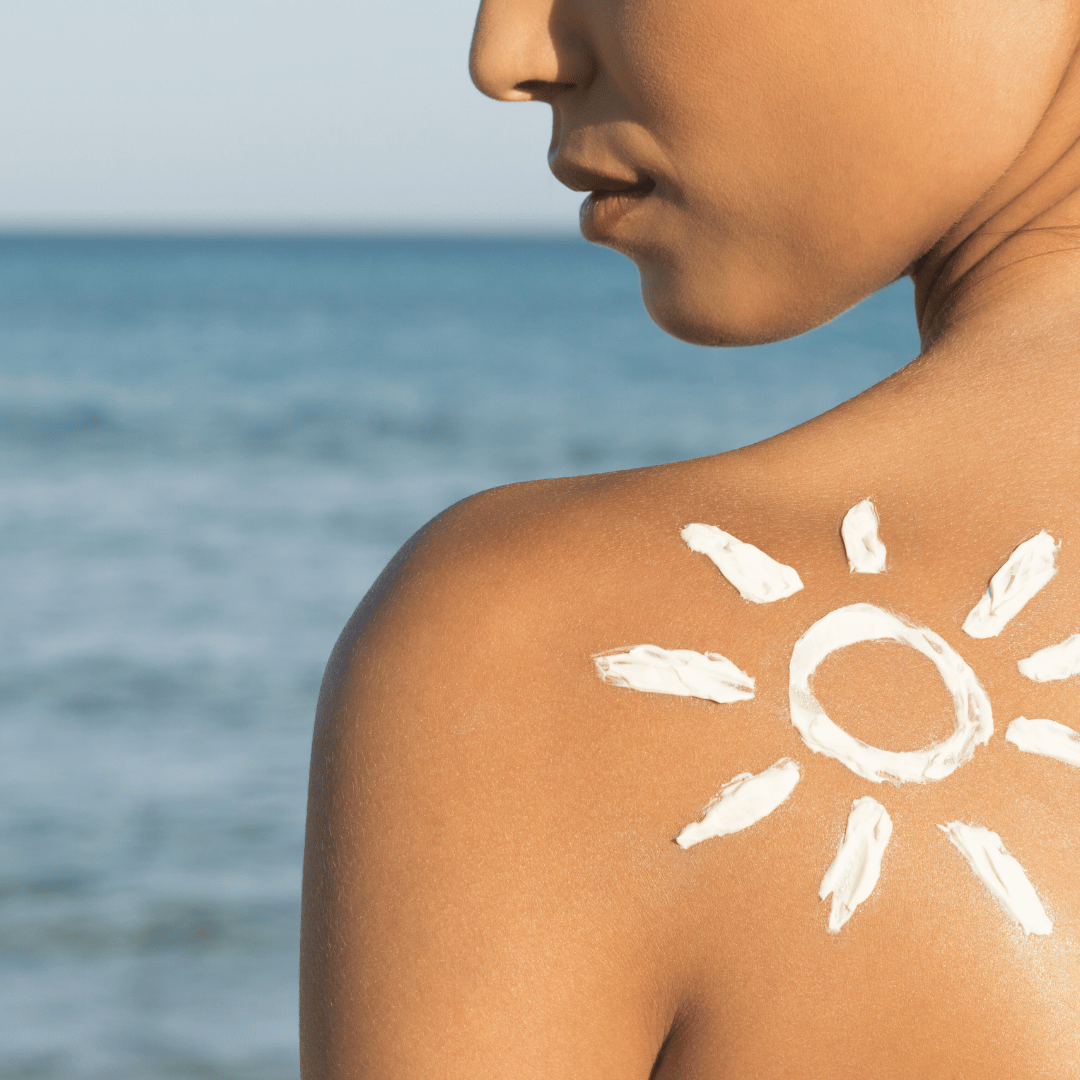Nieuw bij Goldea? 15% kennismaking met code: FRESHSTART15

Nieuw bij Goldea? 15% kennismaking met code: FRESHSTART15
We understand how important it is to enjoy the sun safely, especially if you burn easily, want to get a nice tan or are preparing for a well-deserved holiday.
We often think that we should enthusiastically apply sunscreen, but is that actually healthy?
We are increasingly seeing vitamin D deficiency, even in summer.
With our sun training tips you can naturally get your skin used to the sun and make it more resistant to it. So let's discover together how we can best tackle this.
It all starts with gradually building up your sun training.
Start early in the spring by getting some sun every morning. This is not only great for your biorhythm , but it also helps your skin get used to the sun.
By catching a little sunlight every day, you create a natural protection. Adjust your sun training to your skin type , color phase and the UV index.
Check the UV index here to know when it's best to go outside.
One of the most important sun training tips is the right timing.
During warm and sunny summer weather it is advisable to only go out in full sun until 11am and after 4pm .
In the meantime, seek shade, as the sun is most damaging between 12:00 and 15:00 .
In hot summer weather, twenty minutes in the full sun is often enough. Don't forget to build in rest days so your skin can recover.
Sometimes you have no choice but to go out in the heat of the day. In that case, we recommend wearing protective clothing .
A hat and a light, long-sleeved shirt can help you sunbathe safely without being directly exposed to too many UV rays.
Safe sunbathing also means using safe sunscreen.
There are many natural sunscreen brands. The ones we like to use are:
These brands are free of harmful chemicals and are often better for your skin and the environment. Think ingredients like vitamin E, green tea, coconut oil, calendula and zinc oxide, which form a physical barrier against the sun.
By choosing natural sunscreens you can enjoy the sun without worrying about harmful substances. And also very important these products are also biodegradable and safe for coral reefs. For when you find interesting : here is an inspiring documentary on Netflix: Chasing Coral.
Then a tip that really should not be missed: Astaxanthin , is a carotenoid produced by algae and plankton, according to research it offers natural protection against the sun (see study 1).
Did you know that flamingos owe their pink color to this wonderful substance?
About Astaxanthin : Numerous benefits have been proven in several scientific studies and articles.
One of the benefits of astaxanthin is that it can be used for anti-aging, because it reduces visible signs of aging. In addition, it helps maintain the elasticity and softness of the skin, thus contributing to natural skin rejuvenation.
But that's not all! At the bottom of the blog I share some scientific studies. Such as the influence of astaxanthin and protection against the harmful effects of the sun, so you can read the findings for yourself.
Want to know more about astaxanthin ? Read this blog .
1: Start taking astaxanthine at least two weeks before you begin intense sun exposure. This gives your body time to absorb the antioxidants and prepare your skin.
2: Take the liquid capsule every day at the same time, preferably with a meal containing some fat. Astaxanthin is fat-soluble and is better absorbed with food.
Week 1-2: Start with 1x per one liquid capsule of 80 mg with breakfast.
Week 3-4: Dosage remains the same and start with 10-15 minutes of sun exposure in the morning or late afternoon.
Week 5 and beyond: Gradually increase sun exposure by 5-10 minutes each week, depending on how well your skin responds.
What you eat has a major impact on how well your skin copes with the sun.
Therefore, eat as pure as possible: vegetables, fruit, nuts, seeds, meat, fish and sufficient antioxidants. These foods help your body to better deal with the harmful effects of the sun.
Studies show that antioxidants such as vitamins C and E, beta-carotene and omega-3 fatty acids play a protective role in skin health.
Nutrition works from within and ensures that your skin stays healthy and radiant.
There is a lot to learn about sun training and safe sunbathing.
Therefore, follow experts in this field such as Lars van den Nieuwenhoff and Frank Veldman . Lars has an inspiring podcast at Kukuru where he shares tips and insights about sun training and health. Frank Veldman is active on Instagram and shares valuable information and free sun training guide .
By following these experts, you'll stay up to date with the latest tips and tricks for enjoying the sun safely.
Despite all precautions, you may still get burned.
It is then important to treat your skin well. Start by cooling the skin with a cold (hand) towel or take a lukewarm shower. This helps to draw the heat out of your skin and reduces the pain.
Then, apply pure aloe vera to your skin. This natural gel quickly removes the burn from the skin and cools it down. Aloe vera is known for its healing properties and helps the skin recover faster.
With these sun training tips you can enjoy the sun in a natural and safe way. So one more time (the power of repetition).
Safe tanning is possible if you know how to protect your skin properly. Share your experiences and tips in the comments – we would love to hear from you. Happy tanning!
Sources:
1. Tominaga, K., Hongo, N., Karato, M., & Yamashita, E. (2017). Cosmetic benefits of astaxanthin on humans subjects. Acta Biochimica Polonica, 64(3), 507-511. This review focuses on the cosmetic benefits of astaxanthin, including protection of the skin against harmful effects of UV radiation.
2. Lyons, N.M., & O'Brien, N.M. (2002). Modulatory effects of an algal extract containing astaxanthin on UVA-irradiated cells in culture. Journal of Dermatological Science, 30(1), 73-84. This study investigates the protective effects of astaxanthin against damage induced by UVA irradiation on cells in culture.
3. Kidd, P. (2011). Astaxanthin, cell membrane nutrient with diverse clinical benefits and anti-aging potential. Alternative Medicine Review, 16(4), 355-364. This article summarizes several studies supporting the diverse clinical benefits of astaxanthin, including its antioxidant activity and potential anti-aging effects.
Additional investigations:

Free e-book with a day planner and smart tips for more peace and clarity in your day